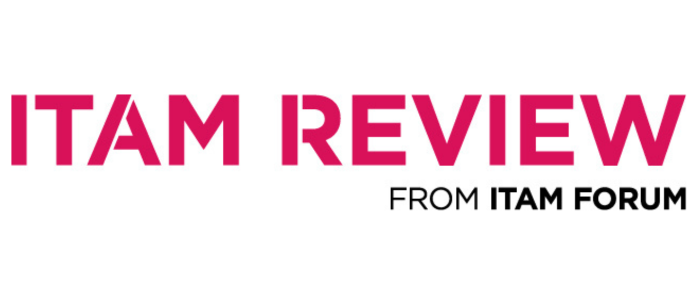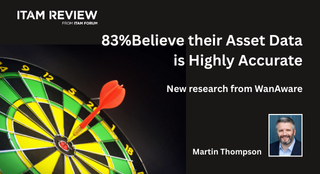Flexera 2024 State of ITAM Report is Here (Key Takeaways)
Hot off the Presses: Flexera has just released its 2024 State of ITAM report. For those unfamiliar, this is an annual research survey conducted by Flexera that examines the status of the ITAM industry. This year, they surveyed 503 IT professionals from various industries and organisations of different sizes around the globe.
This report is a valuable resource for the ITAM industry, as benchmarking your ITAM performance, strategy, operating model, and challenges against others in the industry can be quite challenging.
Note of Caution: Review the findings and data carefully and with a critical eye – this is true for all vendor-led research reports. The target audience and the way questions are presented can impact the results, introducing biases that need to be carefully considered before presenting the material or making significant changes to your ITAM strategy.
Executive Summary:
- Rising Influence of ITAM: ITAM is gaining prominence, with 46% of teams now reporting directly to CIOs or CTOs. This indicated its increasing importance among technology leaders.
- Impact of ServiceNow on ITAM: ServiceNow plays a significant role in the ITAM market, facilitating the synchronisation of asset and CI data and driving alignment between ITAM and Infrastructure and Operations teams.
- Persistence of Audit Challenges: Despite misconceptions, audit defense remains a top priority for SAM teams. This highlights the ongoing challenges with ensuring compliance and effectively managing software assets.
- Limited Involvement in Cloud Governance: While interest in cloud governance is growing, ITAM’s involvement remains limited, particularly in areas beyond SaaS and BYOL. This presents opportunities for greater integration and collaboration within cloud management initiatives.
- Continued Relevance of HAM: Hardware Asset Management (HAM) remains essential, with a growing emphasis on its maturity and importance in ensuring security, sustainability, and operational efficiency.
Analysis:
Reporting Structure and Interactions
ITAM (including SAM and HAM) is gaining executive support as it increasingly becomes a direct report to IT leaders. 46% of teams now report to CIOs/CTOs. This uptick highlights that ITAM and SAM are being recognised as valuable disciplines, reflecting a positive trend for the industry. Interestingly, 44% of respondents report to Infrastructure, Operations, and Service Management teams, which I combined into a single category due to these roles often being used interchangeably.

This trend is noteworthy, especially considering that 65% of respondents reported significant interactions with Infrastructure and Operations teams, and 63% reported significant interactions with IT Service Management teams. Further analysis of the report reveals that 77% of users have incorporated a CMDB into their ITAM practice.
This shift is likely driven by the increasing adoption of ServiceNow, with 61% of respondents exporting asset data to ServiceNow’s CMDB. The architecture of the ServiceNow platform, which relies heavily on accurate asset data and the integrated nature of the AMDB and CMDB, suggests organisations are aligning teams to maximize their investment in this “Digital Dragon.” The goal seems to be achieving the elusive “single source of truth” for ITAM. However, history shows that organisations investing heavily in this approach often face significant costs and challenges in maintaining the data. This can lead to a focus on data management rather than delivering business value.
One puzzling finding is that only 3% of teams, or roughly 15 respondents, report to a procurement/sourcing function. This seems unlikely given the critical focus on audit defense and software optimisation. Additionally, only 38% of SAM teams reported significant interactions with Procurement functions. To further illustrate the importance of this relationship, in the report, “Advanced” SAM teams generate savings via better negotiation of vendor contracts (85%) and reduction of maintenance spend on unused software (85%).

This suggests the relationship between ITAM and Procurement may not be as strong as commonly perceived. For the discipline to succeed, it is essential to emphasise strengthening this bond. This doesn’t necessarily mean reporting directly to Procurement. But, having a robust relationship with this function is crucial for effectively managing audits, optimising costs, and overseeing SaaS applications.
Audits Are Still a Top Priority
Contrary to popular belief, software audits are still prevalent. Preparing to defend against them while optimising software spend remains a significant priority for ITAM teams. Managing software from vendors like Microsoft, Oracle, IBM, SAP, and others is a key focus.
Responding to audits is currently the top SAM responsibility for ITAM teams.

Notably, 22% of respondents reported paying more than $5 million due to software audits during the past three years. 50% experienced at least one audit from Microsoft during this period. Additionally, 47% of SAM teams measure the success of their programs by their “Audit Compliance,” making it the most important metric among other options.
These insights underscore the reality and challenges of audits. However, as an industry, we need to shift our focus from audit defense as a primary measure of success to optimising spend and aligning with value, especially with the increasing adoption of consumption-based models and services. This will propel ITAM practices into the spotlight, particularly in managing complex hybrid estates.
ITAM and Managing Cloud
From my perspective, cloud services (SaaS, IaaS, PaaS, and others) are simply newer types of assets that should be managed within the holistic framework of ITAM. However, it appears that ITAM teams are not fully taking ownership or deeply engaging in the governance of these resources. In fact, 72% of respondents’ organisations have established a Cloud Center of Excellence (CCOE).

Of that 72%, 88% have an ITAM/SAM resource involved to support their efforts. However, only 32% of SAM teams report significant interactions with their organisation’s FinOps teams. While this represents an increase from previous years, it is concerning that with many organisations establishing CCOEs and FinOps practices, ITAM/SAM teams still do not perceive significant interaction.
When revisiting the responsibilities of SAM functions, current responsibilities related to cloud management for ITAM teams were listed as follows:
- 56% listed tracking SaaS usage
- 55% listed tracking the use of software licenses in the public cloud
- 46% listed tracking and optimizing IaaS and PaaS spend
These ranked 6th, 8th, and 11th, respectively, among the options presented. However, optimising IaaS and PaaS spend was listed as a planned responsibility for 42% of respondents, ranking 3rd overall among newly planned responsibilities. For organisations that consider themselves “advanced” in SAM, 63% of respondents already focus on tracking licenses in public cloud environments, and 67% track SaaS usage.
Additionally, 36% of respondents said dealing with new environments (SaaS, Cloud, and Containers) presents significant challenges to their SAM programs. When asked about the top three SAM initiatives for the next year, managing SaaS, licenses in the public cloud and public cloud usage/spend were not ranked very high.

While I don’t believe there is a one-size-fits-all approach to managing and governing cloud assets (services), I find it concerning that ITAM and SAM teams aren’t more significantly involved in these efforts or prioritising them. Given that 77% of respondents have already established FinOps practices within their organisations, ITAM/SAM teams must prioritise how they can support these practices and have more significant interactions with them as more applications and workloads shift to cloud services. The easiest path to do so would be through the management of BYOL opportunities and improving the management of SaaS applications. This would provide an inroad to establish value for your ITAM practice and create a more holistic approach to managing all technology.
HAM Stays Relevant
ITAM was initially built to manage hardware assets. Over time, the focus had shifted to managing software assets to maintain compliance. As a result, it seemed as if HAM had been the forgotten component of ITAM (even though you couldn’t do SAM without HAM). However, in recent years, it appears HAM maturity is on the rise. Only 27% of respondents listing themselves as ‘HAM Beginners.’

So, what’s driving this newfound emphasis on HAM? If we look back at the significant partner interactions based on role reports, we can start with Security, Infrastructure, and Enterprise Architecture.
- Security: You cannot secure what you cannot see. This is true for EOL/EOS OS and Firmware that reside on assets. Also, Asset inventory is a critical component of any security framework. Many regulatory bodies also require effective hardware asset management.
- Infrastructure and Operations: Again, referring to the need to export data to CMDBs. These critical insights are often vital to service desks and related incidents, problems, and outages.
- Enterprise Architects: Modernisation and transformation often require us to look at the underpinning technology that enables business capabilities. Given that many of these capabilities have been built on legacy hardware assets, managing that infrastructure/asset and ensuring that capabilities aren’t disrupted, and prioritising which should be rearchitected based on the metadata, is vital to successful planning.
Finally, the rise of Sustainable IT Practices is now more prevalent than ever. In fact, 95% of organisations have sustainability practices in place for hardware. This includes elements like “recycling, longer life cycles, and more.”
Wrap Up
The annual State of ITAM report from Flexera offers a wealth of valuable insights and actionable findings for asset management professionals. From trends in hardware and software asset management to emerging practices in cloud governance and security, the report provides invaluable nuggets of information to inform strategic decision-making. I highly recommend analysing its findings and leveraging them to enhance your asset management strategy moving forward.
Can’t find what you’re looking for?
More from ITAM News & Analysis
-
83% of IT Managers Believe their Asset Data is Highly Accurate - Only 35% of the Business Agrees
New and interesting research from WanAware hits at the nub of the disconnect many IT Asset Managers might feel about the value they deliver. The ‘Closing the ITAM Confidence Gap. 2025 Survey Insights for IT Leaders’ ... -
Microsoft Q4: Cloud and AI Results Drive Record Revenue
On 30th July 2025, Microsoft released its much-anticipated FY25 Q4 earnings report. The results follow a surprisingly strong Q3, which exceeded the expectations of some of the most optimistic investors. The latest Q4 results continue with ... -
10 Strategic Lessons for Tackling Compliance, Audits, and Software Licensing Risk in 2025
The ITAM Forum’s 2025 global ITAM research report in partnership with Azul reveals some fascinating insights into the financial, operational, and compliance risks involved in software licensing and audits. This article provides a high-level overview of ...
Podcast
ITAM training
Similar Posts
-
83% of IT Managers Believe their Asset Data is Highly Accurate - Only 35% of the Business Agrees
New and interesting research from WanAware hits at the nub of the disconnect many IT Asset Managers might feel about the value they deliver. The ‘Closing the ITAM Confidence Gap. 2025 Survey Insights for IT Leaders’ ... -
Microsoft Q4: Cloud and AI Results Drive Record Revenue
On 30th July 2025, Microsoft released its much-anticipated FY25 Q4 earnings report. The results follow a surprisingly strong Q3, which exceeded the expectations of some of the most optimistic investors. The latest Q4 results continue with ... -
10 Strategic Lessons for Tackling Compliance, Audits, and Software Licensing Risk in 2025
The ITAM Forum’s 2025 global ITAM research report in partnership with Azul reveals some fascinating insights into the financial, operational, and compliance risks involved in software licensing and audits. This article provides a high-level overview of ... -
Broadcom vs Siemens AG - A Brewing Storm
The ongoing legal battle between VMware (under Broadcom ownership) and Siemens is yet another example of why ITAM goes far beyond license compliance and SAM. What might, at first glance, appear to be a licensing dispute, ...




